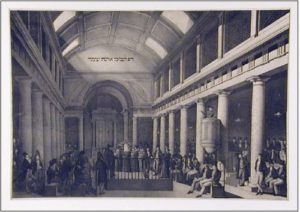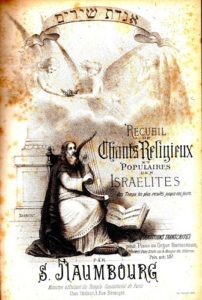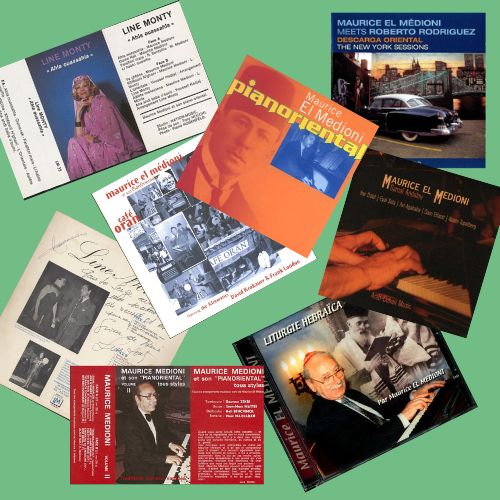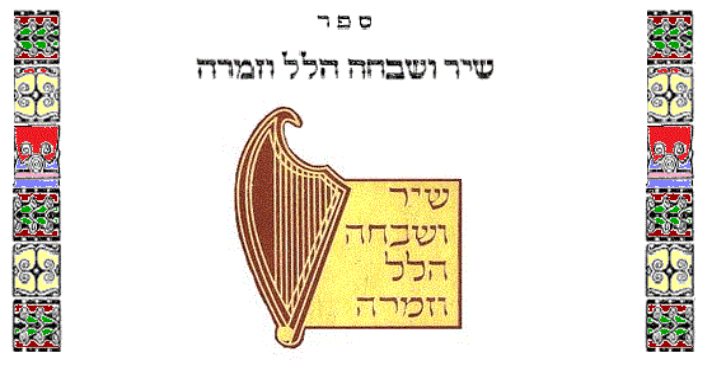
Presentation text and digitized version of Gérard Ganvert‘s thesis [1]Doctor in music history and musicology, qualified to direct research, former associate professor of Music and Musicology at the Sorbonne University (Paris-IV) and lecturer at the University of … Lire la suite, defended in June 1984,at the Sorbonne University (Paris-IV).
Origins of the subject
The subject of the present work, studied at the end of the 1970s, is the result of previous exchanges between its author and the famous musicologist Israel Adler (1925-2009). For the latter, it was still necessary and useful to study a period little or insufficiently explored: that which, following the action of Napoleon I, had seen the establishment of a Parisian synagogal music, a contemporary liturgical expression of the first Parisian consistorial temple, which remained the first and only official synagogue from 1822 to 1874.

[Consistorial Archives, 5G1 Serie]
Such a study was also intended to restore the action of the two essential agents of this cultic reform: the cantor Israel Lovy (1773-1832), a figure who was then rather poorly known, and his distant successor Samuel Naumbourg (1817-1880).
The approach used
The present study, carried out in the early 1980s, was based on a meticulous examination of the Consistorial Archives and a thorough review of numerous post-revolutionary periodicals and musical documents. It thus allowed the reappearance of historical and musicological elements contemporary with the profound mutation of the Parisian Jewish communities of the first two thirds of the 19th century, elements that had remained more or less forgotten, neglected, or even transmitted with inaccuracies that had become traditional.
The established plan

(copy from the author’s library)
This work was articulated around four chapters.
Chapter 1 recalled the evolution of French and Parisian Judaism from the Restoration to the beginning of the Third Republic. Chapter 2 described the establishment of synagogal music, which became Parisian within the first consistorial temple. Chapter 3 detailed more specifically the actions of the ḥazanîm Israel Lovy and Samuel Naumbourg, as well as those of certain other cultural promoters, both Jewish and non-Jewish. Chapter 4 presented and studied the chronological publication of editions of synagogal music collections. It also examined the manuscript and printed scores of this period, as well as the published musicological evidence.
Finally, seven appendices have completed the work, in order to make it easier for the reader to consult, followed by a very important commented bibliography, structured in four parts (manuscript sources; printed sources; reference works; illustrative bibliography) and an index nominum.
The content provided
Defined and recognized as a national sub-group by the effects of the two successive emancipations – revolutionary and Napoleonic – French Judaism was able to undertake its modernization with the strong will to offer its contemporaries a “renewed” cult, capable of being favorably compared to the established Christian cults.
From an obvious initial approach centered on the two ḥazanîm Lovy and Naumbourg, the first surveys made it possible to affirm that, contrary to a number of sources, the true reformer-promoter of Parisian synagogal music had been Israel Lovy and not Samuel Naumbourg, though traditionally credited as such, but in fact a simple continuator of this reform twenty years later.
These preliminary observations led to a more in-depth study of the period 1822-1874, half a century during which the first Parisian consistorial synagogue remained the only official temple in the capital, an institution with which the contemporary musical and artistic world developed close relations. The focus has thus shifted from an indispensable historical introduction to the interest in building such a synagogue and establishing a new musical tradition, to the study of its promoters and, finally, to its technical description.
Read the biography of Israël Lovy
Read the biography of Samuel Naumbourg

Warning: This text has been made available by the author for study purposes only. In case of reuse of texts, scores or illustrations of this thesis, the author must be cited. See how to quote the authors and mention the license.
| 1 | Doctor in music history and musicology, qualified to direct research, former associate professor of Music and Musicology at the Sorbonne University (Paris-IV) and lecturer at the University of Versailles-Saint-Quentin (France). |
|---|



